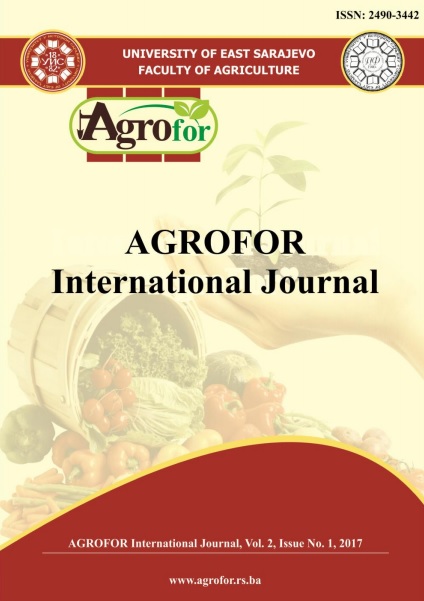GENETIC VARIABILITY OF THE CEREAL (POACEAE) GERMPLASM COLLECTION MONITORED BY PROTEIN AND MOLECULAR MARKERS
DOI:
https://doi.org/10.7251/AGRENG1701075DAbstract
All the new challenges that food production has been experienced, requires
adequate response not only in wide agricultural practice, but also in modern
breeding programs. Broadening genetic variability is indispensable to meeting the
border set by climatic changes, land erosion, human population growth, and
sustainable agriculture. Gathering genetic variability, forming and examining
genetic collection are integral part of the task. A germplasm collection of 220
entries, consisting of cereal (Poaceae) genotypes has been formed. Genetic
variability of wheat (Triticum sp. ), barley (Hordeum sp. ), and goat grass (Aegilops
sp. ), samples from the germplasm collection was analysed using gliadin blocks as
protein markers, as well as, Random Amplified Polymorphic DNA (RAPD)
markers. Gliadin allelic variation was notable within Triticum sp. samples,
revealing not only genetic divergence, but also the origin and the structure of
populations. Genotype variation and structure of populations of Hordeum sp. was
followed by hordein allelic variation. Sampled population expressed heterogeneity
from two to five genotypes per population sample. Landraces, old and modern
varieties were separated in collection using hordein allelic variation, as well. A
small, pilot, investigation was conducted on Aegilops sp. polymorphism using
RAPD primers. Number and percentage of polymorphic loci, effective number of
alleles, expected heterozygosity and Shannon’s information index were used to
estimate genetic variation.

